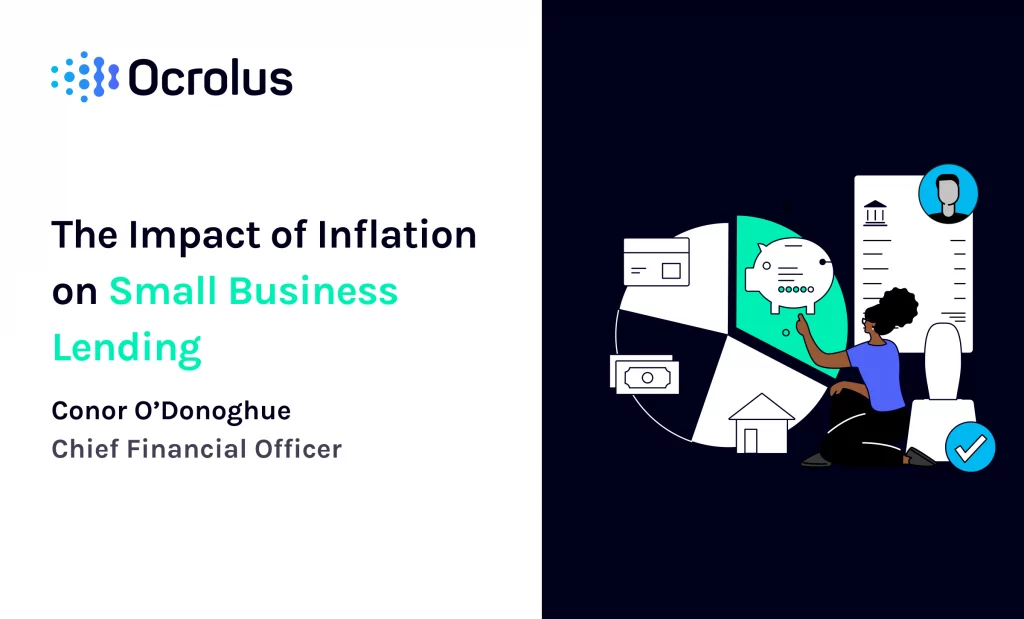This website uses cookies so that we can provide you with the best user experience possible. Cookie information is stored in your browser and performs functions such as recognising you when you return to our website and helping our team to understand which sections of the website you find most interesting and useful.
The Effect of Inflation on Small Businesses & Lending

Inflation is already having a profound impact on consumers and businesses alike. According to the Bureau of Labor Statistics, the personal consumption price index (CPI) —which the Federal Reserve views as the most accurate measure of inflation—climbed to 8.3% in the 12 months ending in August 2022. This represents the steepest 12 month increase since 1979.
As if rising inflation in the U.S. didn’t create enough concern, the global forecast isn’t much better. According to Fitch Ratings, global inflation is back with a vengeance after being mostly absent for at least two decades. Additionally, rising oil and gas prices will increase industry costs and reduce consumer real incomes. Anticipating these shockwaves, Fitch has cut its world gross domestic product (GDP) growth forecasts for 2022.
Given these continuing economic challenges, small business lenders will need to know what to expect when it comes to inflation and small business lending. Here’s how current inflation rates are affecting small businesses now and how continued inflation could influence small business lending in the coming months.
The State of Small Business
Although the pandemic shattered some businesses, many others were able to thrive. According to the Ocrolus Small Business Health Index, the average daily balance of business bank accounts has grown by almost 80% since the start of the pandemic, as businesses saved and built up cash buffers to deal with further unexpected events. This is due in part to extensive government support for small businesses via lenders and improved cash flow from operations.
At the same time, small businesses are demonstrating a greater appetite and readiness for access to capital. Small business credit application volumes rose by 28% during this same time frame. In fact, the overall volume of applications for small business lending through Ocrolus-enabled lenders now exceeds levels seen before the pandemic.
How Does Inflation Affects Small Business
Although many small businesses are in a stronger financial position, they may encounter difficulties with inflation, interest rates and access to capital this year. On top of the existing supply chain challenges they may already be encountering, small businesses may also notice a shortage in materials or finished products in the market.
The cost of borrowing may also go up as inflation rises. The Fed raised interest rates in September for the fifth time in 2022, taking their target federal funds rate from 0 at the start of 2022 to3% – 3.25%, And nothing indicates this will be the last time. Small business owners may feel those interest rate increases in the form of more expensive loans, higher credit card fees, and slower business growth.
These economic trends may make it more difficult for small businesses to manage their finances. At the same time, many businesses have successfully passed the cost of inflation through to consumers so far, which has helped them weather these challenges up to a certain point.
Bull or bear: what could 2023 look like?
Given all these developments, how would 2023 look for small business lending given a bull or bear market?
In a bull scenario, the stock market may have already priced in the cost of an economic downturn. Home prices may still increase as housing supply continues to significantly trail demand. But if housing and energy prices end up subsiding, inflation could cool. We may also see record corporate profit growth and record wage growth. And as Paycheck Protection Program (PPP) funding wraps up, private lenders may see an uptick in small business demand for credit.
In a bear scenario, the Fed will continue to take much more aggressive action to halt inflation. These steps will lead to higher interest rates, lower credit demand, and slower economic growth— possibly even a recession—in 2023. These economic developments, in turn, will result in lower credit demand and higher credit losses for lenders.
Small Business Lenders Need to be Prepared
Although many small businesses find themselves in a surprisingly strong financial position thanks to their cash buffers and access to widespread government support during the pandemic, continued inflation may diminish their purchasing power and make the cost of borrowing more expensive, meaning lenders will need to be prepared for lower demand. With rates constantly rising in 2022, small business owners may reevaluate if they actually need the capital at such a high interest rate before filling out that application.
Whether a bear or bull scenario happens, it’s best for lenders to be as prepared as possible for the potential impacts of inflation on businesses and their need for lending credit. By leveraging intelligent document automation, small business lenders can gain the agility they will need to cope with either scenario. With Ocrolus, small business lenders can automate their underwriting workflows from end to end, allowing them to successfully navigate periods of economic uncertainty.

Learn how Ocrolus can help you automate your workflows and accelerate your lending processes.






